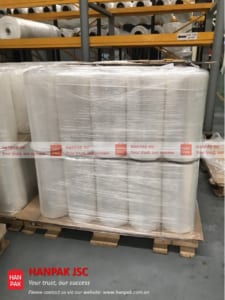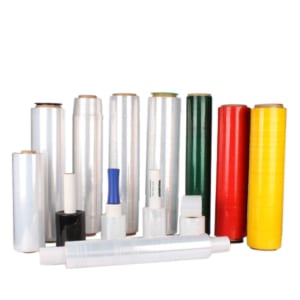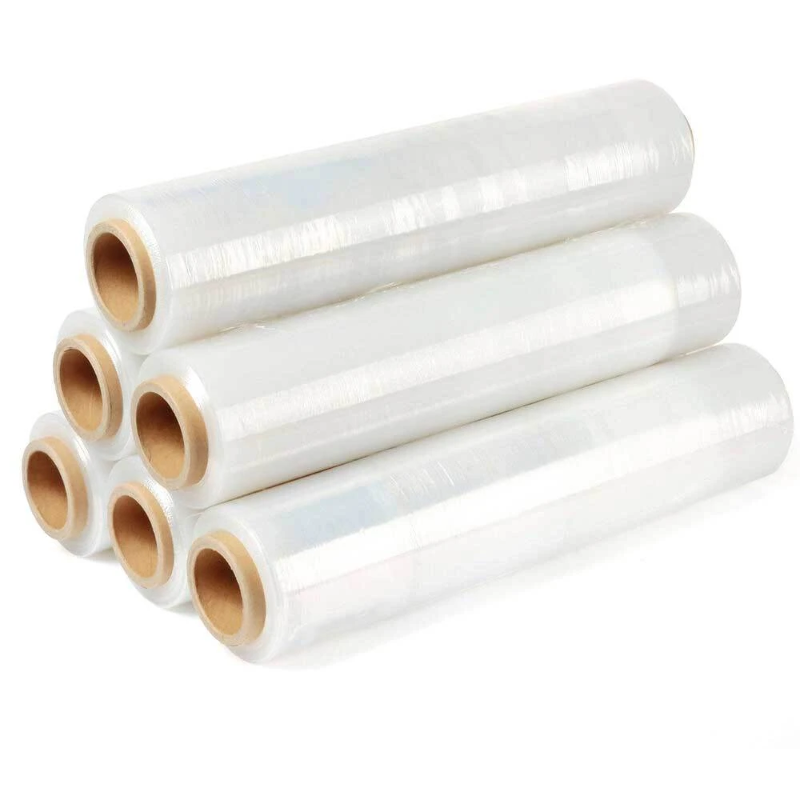The following is a list of stretch film terms to know. This will help you fully understand the product and how it can help your packaging process.
Blown Stretch Film
A film extruded by the blown balloon type inflation system. Beads of resin are fed through a heated machine that has a circular die. The heated resin is forced through the die and then blown out vertically into a bubble. As this formed bubble finishes the process of being transformed into rolls of stretch film, it is cooled by the surrounding air. This type of blown stretch film generally costs more to make because the output per hour is less than with cast films.
Cast Stretch Film

Molten plastic extruded over full width of a die, then cooled and crystallized over a drum. Cast film typically is quieter, more transparent, and glossier than blown film because of this process. Stretch film extruded by the cast method typically have greater tear resistance, greater aesthetic values and are quiet to unwind, which is not typically found in film manufactured by the blown method.
Cling (single side – two sided – differential)
Cling is a bonding agent added to stretch film to increase the stickiness quality of the film. This is desirable to allow the layers of stretch film applied to bond to the previous layers effectively creating a single wall of stretch film. Depending on the desired effect the bonding agent is applied to one or both sides. It is most commonly applied using co-extrusion where the bonding agent is a layer that is co-extruded during the manufacturing process.
Film Force (Film Tension)
Film Force is the retaining force applied by the stretch film on the product being wrapped. This force is typically measured in pounds. Film force is created two ways. The second method is by delaying the film feeding out of the carriage. During wrapping the film is fed out at a constant tension. By delaying the response (speed) of the carriage film feed, you electronically increase the film tension. A film force dial is typically located on the control panel or carriage.

Film Force Release
A feature typically used on automatic stretch wrapping equipment whereby the film force feature is disabled for a time at the beginning and end of the cycle. This feature prevents unwanted tension at the two points during the cycle where added tension would create problems. The stretch film pulling out of the clamp at the beginning of the cycle and the detaching of the trailing tail at the end of the cycle are typically remedied by film force release.
Film Gauge
Is the imperial measurement used for measuring film thickness.

Film Tail
The film tail is the stretch film end piece that is applied to a pallet or load to start a wrapping cycle. It is also the stretch wrap end piece created when cutting the film at the end of the wrapping cycle
Why you should choose Hanpak?
Along with capacity 5000 tons/month and 20 year experience, Hanpak JSC always put the quality on top. Furthermore, our priority is building a long term relationship with our customers.
Therefore, please contact us via email:info@hanpak.com.vn or Mobile/Whatsapp/Skype:+84 898 545 893 for more information immediately. We’re sure your any inquiry or requirement will get prompt attention from our sales experts.
For reference about our products, kindly to visit our Alibaba shop
Hope to cooperate with you soonest!

